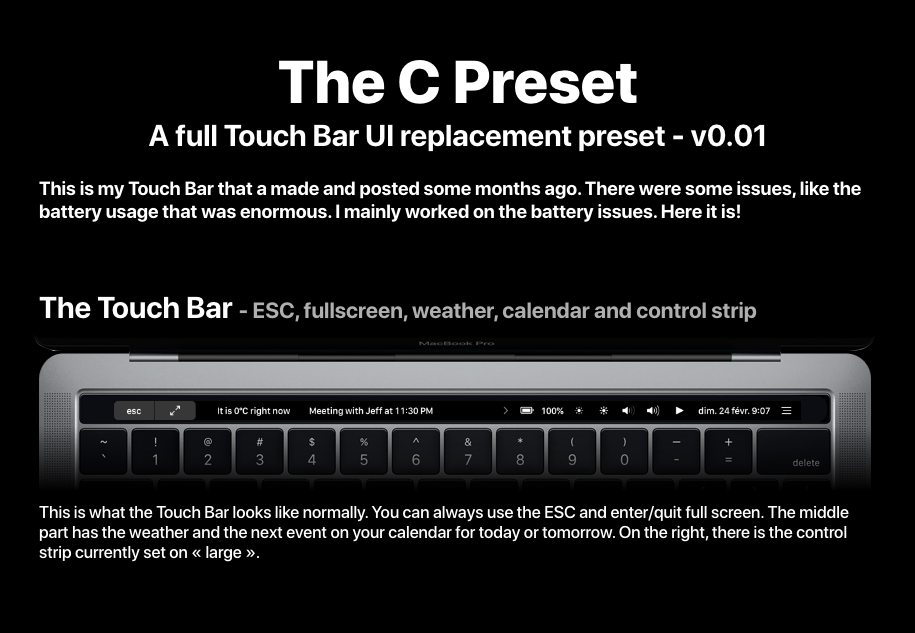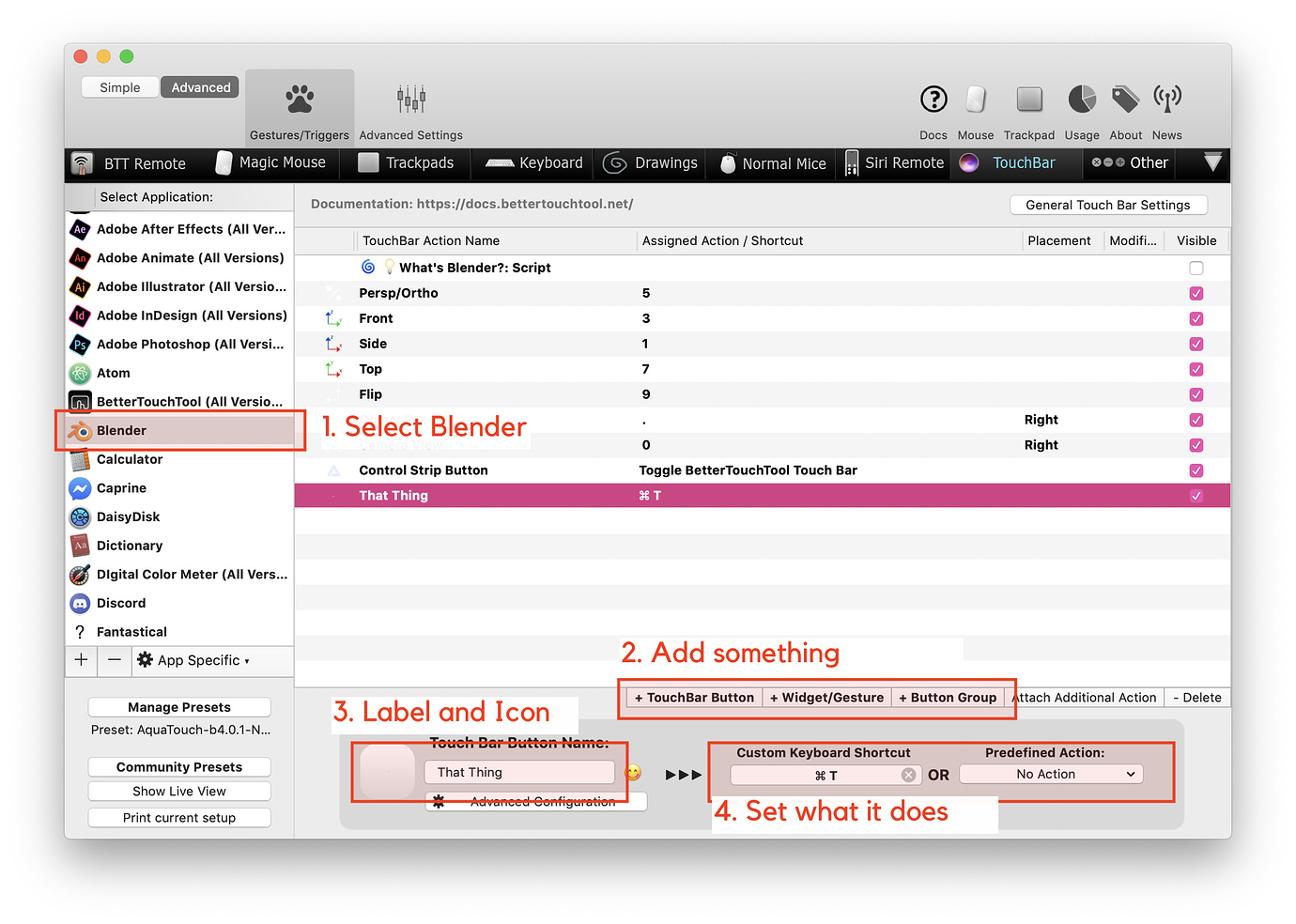
For the purposes of this article, we’ll focus on two good Touch Bar-related apps: Pock and Better Touch Tool.

You can personalize the Touch Bar far beyond what Apple allows you to do natively. Third-party apps can even access the Touch Bar UI and allow users to customize it to their liking.
BETTERTOUCHTOOL SPOTIFY TOUCH BAR SOFTWARE
But since macOS isn’t a walled-garden software like iOS, there’s the potential for a wide variety of third-party experimentation. Use a third-party App to get more out of Touch BarĪt this point in the article, you’ve probably noticed that the native macOS settings for the Touch Bar are rather limited. Some options, like VoiceOver, will be enabled automatically on the Touch Bar when you turn on the accessibility feature itself. You’ll find these options in System Preferences -> Accessibility.

You can, for example, enable VoiceOver on your Touch Bar, or you can add the built-in macOS Zoom feature to the peripheral interface. This is imperative for those who need them, but it can also be useful for any user. In addition to the basic customization options, there are also some accessibility features that can be added to the Touch Bar. Add Accessibility options to Touch Bar You can add certain accessibility options to the Touch Bar for easier, one-tap access. But there are still a few worth checking out. In the author’s humble opinion, one of the most useful options is the agility to enable or disable Night Shift with a single tap.Īgain, there aren’t many options and most of them aren’t all that powerful. Want to quickly take a screenshot or bring up Spotlight search with a tap? You can do that, too. There’s an option to quickly open Launchpad or Mission Control, for example. But you can actually swap any of these icons for the other available controls. You can find them in System Preferences -> Keyboards -> Customize Touch Bar.īy default, the Touch Bar will display a brightness button, a volume button, a mute button and the Siri button. There aren’t basic customization options, but they’re still there if you’d like to experiment with them. Built-in controls Apple’s native Touch Bar customization isn’t all that in-depth, but it’s worth checking out if you’d like to get more out of the UI element. You have two general options: the basic controls and accessibility features.

If you’d like to get some use out of the Touch Bar but you aren’t happy with the default configuration, there is the option to customize it. Customize the Touch Bar to your preferences This is handy if you like the Touch Bar in Photoshop but not anywhere else. On the other hand, you can also go to Shortcuts and select the Function Key option on a per-app basis.

That’s fine and dandy, but it also means that getting to the function keys (like the brightness or volume sliders) takes an extra step in most situations.īut you can do away with this completely by setting the Touch Bar to only display the function key strip. This means that the Touch Bar’s user interface will change contextually depending on the app that you’re using.
BETTERTOUCHTOOL SPOTIFY TOUCH BAR PRO
But if you have a newer MacBook Pro and are missing the function strip, this is maybe the next best thing.īy default, macOS will display App Controls with a Control Strip. Of course, you won’t have actual, physical function keys. If you’re unlikely to become a Touch Bar convert and you just want your function keys back, there’s actually a way to do that. MacBook Pro Touch Bar tips You can set the Touch Bar to only display the function key strip or system controls (like volume and brightness). Bonus Tip: Take a screenshot of the Touch Bar.Use a third-party App to get more out of Touch Bar.Customize the Touch Bar to your preferences.


 0 kommentar(er)
0 kommentar(er)
